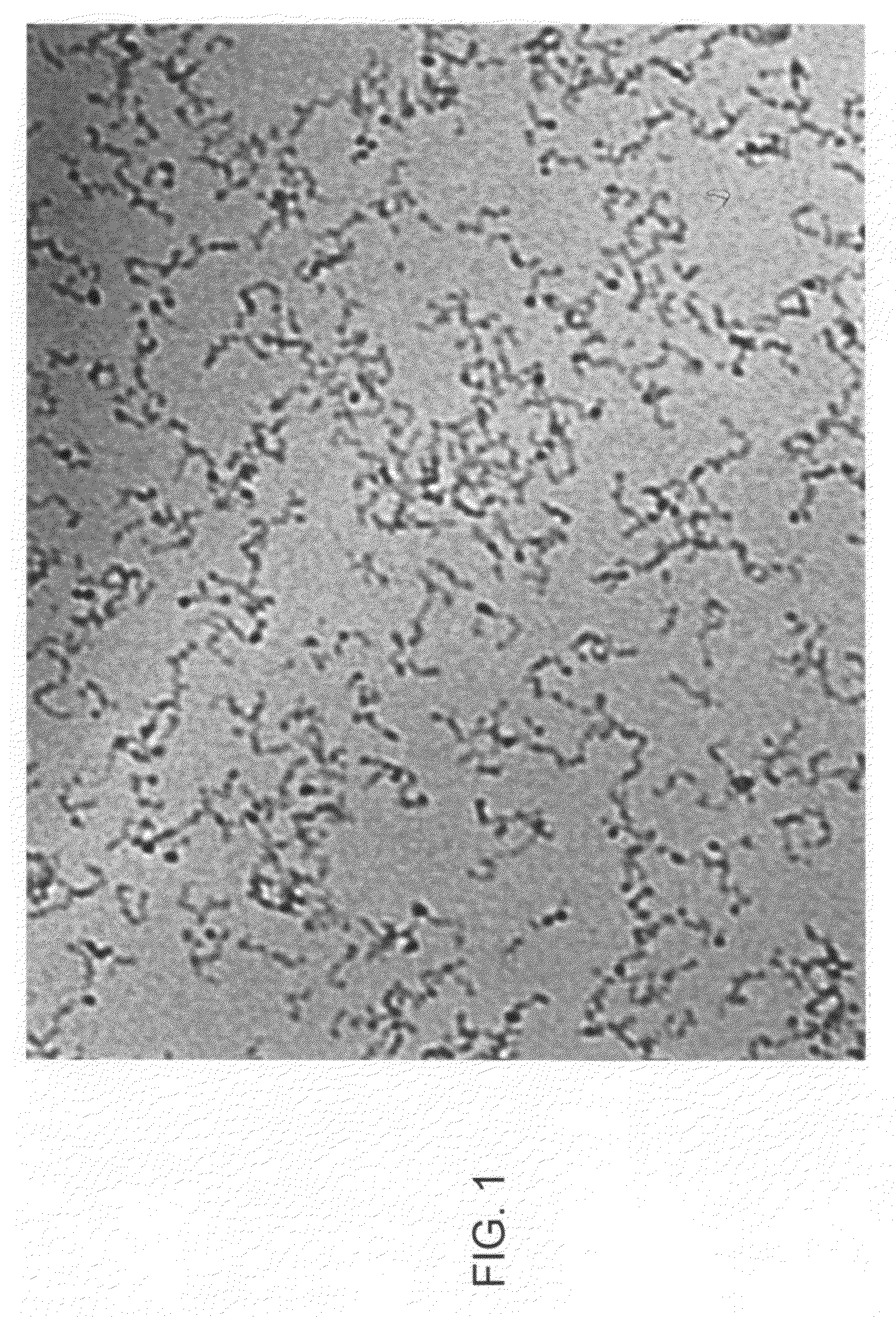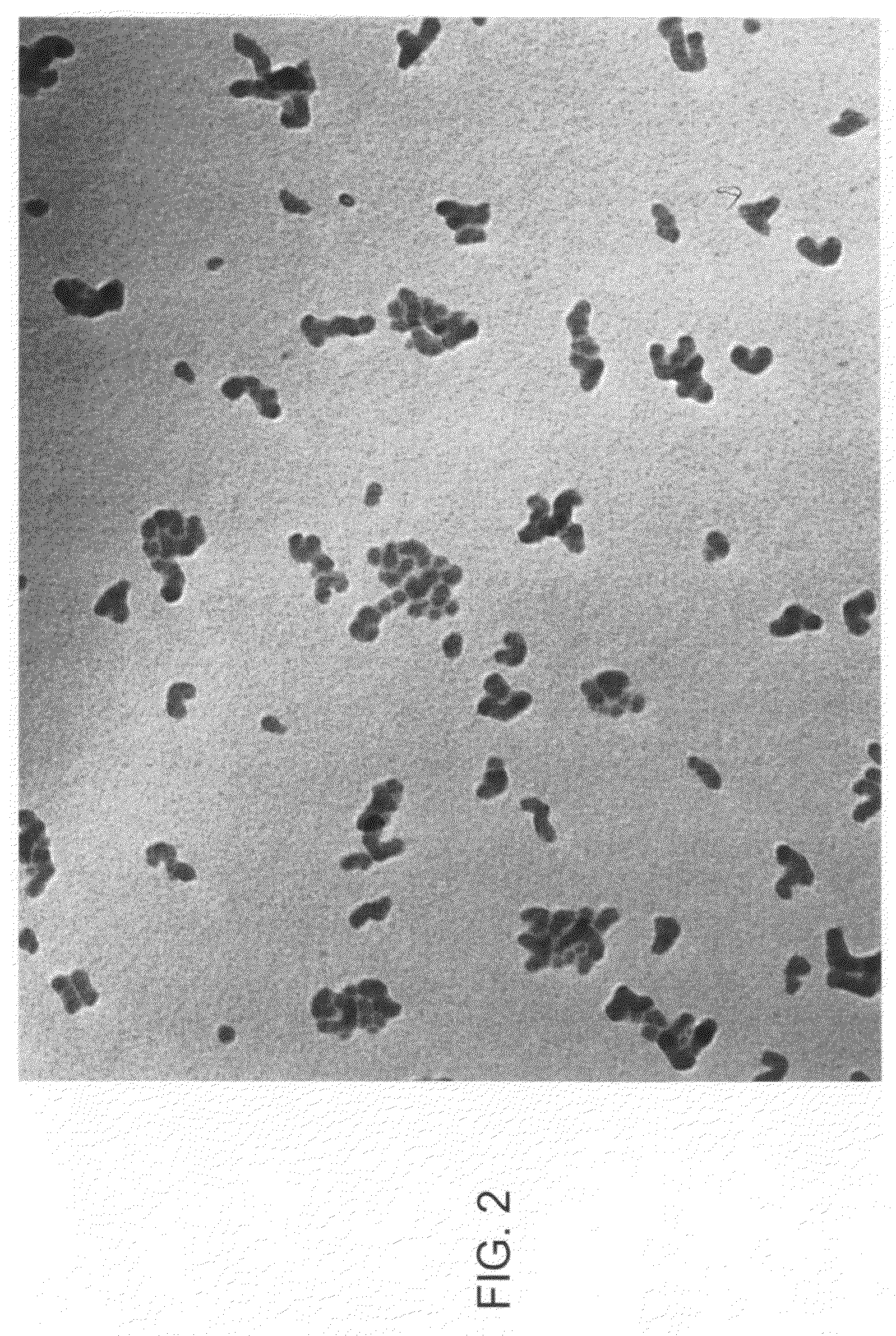Colloidal silica for semiconductor wafer polishing and production method thereof
- Summary
- Abstract
- Description
- Claims
- Application Information
AI Technical Summary
Benefits of technology
Problems solved by technology
Method used
Image
Examples
example 1
[0077]Hydrolysis of tetrametoxysilane is practiced by a composition of 4.49 mol / L tetrametoxysilane, 0.01 mol / L acid, and 18.38 mol / L water without using solvent. Practically, hydrolysis is performed by processes mentioned below.
[0078]Diluted hydrochloric acid solution is prepared by adding 0.2 g of 35% hydrochloric acid into 46 g of deionized water. 96 g of tetrametoxysilane (special grade reagent, converted SiO2 concentration is 39 wt %) is placed into a container, then above mentioned diluted hydrochloric acid solution is added with stirring. At the first stage, said two solutions are separated and are not mixed well. After several minutes, hydrolysis reaction starts with heat evolution, and the mixture becomes transparent homogeneous solution. Stirring is continued another 30 minutes so as the hydrolysis reaction to be completed, and hydrolyzed solution is obtained. Then said solution is diluted by adding 116 g of deionized water to prevent the polymerization of active silicic a...
example 2
[0082]By same method as Example 1, tetramethoxysilane is hydrolyzed and an active silicic acid aqueous solution having SiO2 concentration of 3.7 wt % and a pH of 2.6 is obtained. The pH is adjusted to 9.8 by adding 64 g of a 10% morpholine aqueous solution to 500 g of the active silicic acid aqueous solution with stirring. After that, solutions are heated with stirring, maintained at 100° C. for 1 hour, to form colloid particles. Then, while maintaining the temperature at 100° C., 2600 g of the active silicic acid aqueous solution and 40 g of the 10% morpholine aqueous solution are simultaneously added by 4 hours to grow silica particles. After adding process, the solution is matured by maintaining the temperature at 100° C. for 1 hour, then cooled down.
[0083]Silica concentration of obtained colloidal silica becomes 5.6 wt % due to evaporation of water and a pH at 25° C is 9.0. According to a transmission electron microscope (TEM) observation, obtained colloidal silica is composed o...
example 3
[0084]Colloidal silica obtained by Example 2 is concentrated. After that, pressure filtration by pump circulation is carried out using hollow fiber ultra-filter membrane whose molecular cutoff value is 6000 (MICROZA UF MODULE SIP-1013, product of ASAHI KASEI Corp.). In this way, colloidal silica is concentrated to make the solution having SiO2 concentration of 22.1 wt % and approximately 520 g of concentrated colloidal silica is obtained. Obtained colloidal silica has a pH of 8.6 at 25° C., and alkali metal concentration is smaller than 1 ppm.
PUM
 Login to View More
Login to View More Abstract
Description
Claims
Application Information
 Login to View More
Login to View More - R&D
- Intellectual Property
- Life Sciences
- Materials
- Tech Scout
- Unparalleled Data Quality
- Higher Quality Content
- 60% Fewer Hallucinations
Browse by: Latest US Patents, China's latest patents, Technical Efficacy Thesaurus, Application Domain, Technology Topic, Popular Technical Reports.
© 2025 PatSnap. All rights reserved.Legal|Privacy policy|Modern Slavery Act Transparency Statement|Sitemap|About US| Contact US: help@patsnap.com



